-
 Bitcoin
Bitcoin $107,323.9971
-0.42% -
 Ethereum
Ethereum $2,442.7415
-1.58% -
 Tether USDt
Tether USDt $1.0005
0.00% -
 XRP
XRP $2.0902
-4.49% -
 BNB
BNB $645.3561
-0.33% -
 Solana
Solana $140.8832
-2.81% -
 USDC
USDC $0.9999
0.01% -
 TRON
TRON $0.2713
0.17% -
 Dogecoin
Dogecoin $0.1611
-2.35% -
 Cardano
Cardano $0.5556
-2.75% -
 Hyperliquid
Hyperliquid $36.8045
-1.10% -
 Bitcoin Cash
Bitcoin Cash $494.4393
-1.23% -
 Sui
Sui $2.6406
-2.97% -
 Chainlink
Chainlink $13.0846
-1.74% -
 UNUS SED LEO
UNUS SED LEO $9.0127
0.09% -
 Avalanche
Avalanche $17.4023
-1.37% -
 Stellar
Stellar $0.2339
-3.25% -
 Toncoin
Toncoin $2.8330
-0.57% -
 Shiba Inu
Shiba Inu $0.0...01124
-3.38% -
 Litecoin
Litecoin $84.9229
-0.60% -
 Hedera
Hedera $0.1432
-3.84% -
 Monero
Monero $311.0740
-1.35% -
 Bitget Token
Bitget Token $4.6591
3.94% -
 Dai
Dai $1.0001
0.01% -
 Ethena USDe
Ethena USDe $1.0000
-0.01% -
 Polkadot
Polkadot $3.3033
-1.64% -
 Uniswap
Uniswap $6.9221
-4.55% -
 Pi
Pi $0.5546
-4.86% -
 Aave
Aave $257.5046
-1.30% -
 Pepe
Pepe $0.0...09215
-3.26%
Is it a trend reversal if the price breaks through the upper rail of the descending channel and then steps back without breaking?
A descending channel signals sustained bearish pressure, with price bouncing between downward-sloping trendlines, offering potential shorting opportunities on upper rail rejections.
Jun 27, 2025 at 05:35 pm
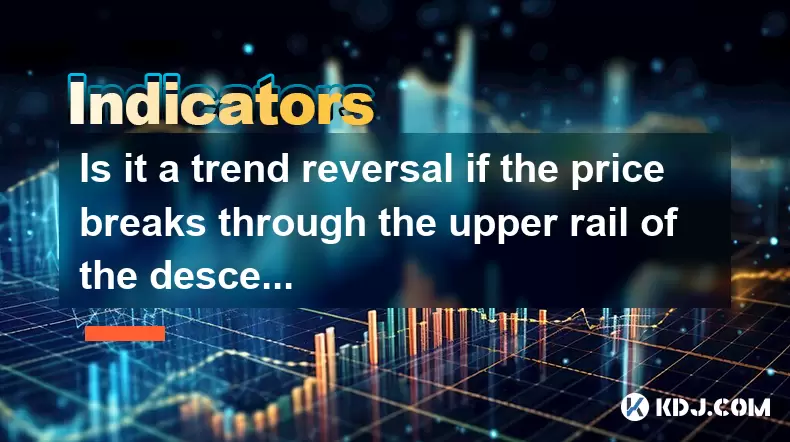
Understanding the Descending Channel Pattern
A descending channel is a technical analysis pattern formed by two parallel downward-sloping trendlines, one acting as resistance and the other as support. This pattern typically indicates a continuation of a downtrend, where price action oscillates between these two boundaries. Traders often look for breakouts or breakdowns from this structure to anticipate potential reversals or continuations.
When analyzing a descending channel, it's crucial to recognize that each time the price touches the upper rail (resistance), it usually gets rejected and moves back toward the lower boundary (support). The repeated nature of this movement reinforces the bearish bias in the market.
Key Concept: A descending channel represents sustained selling pressure and is considered a bearish formation until proven otherwise.
What Does It Mean When Price Hits the Upper Rail?
Hitting the upper rail of a descending channel signifies that buyers attempted to push prices higher but faced strong resistance. This rejection often leads to a resumption of the downward trend. However, if the price shows signs of strength near the upper boundary — such as long wicks, bullish candlestick patterns, or increased volume — it may hint at weakening bearish momentum.
It's important to differentiate between a standard rejection and a more significant reaction that could indicate a shift in sentiment. If the price doesn't immediately fall back after touching the upper rail, but instead consolidates or forms a base, this could be an early signal of a potential change in trend.
- Normal Rejection: Sharp move down after touching the upper rail.
- Potential Signal: Consolidation or bullish candlesticks after hitting the upper rail.
Does Breaking Through the Upper Rail Indicate a Trend Reversal?
A breakout above the upper rail of a descending channel might raise expectations of a reversal, especially if it occurs with strong volume or a decisive candlestick close. However, not every breakout confirms a reversal. In many cases, the price may test the upper rail, briefly move beyond it, and then retreat back into the channel — a phenomenon known as a false breakout.
Traders should be cautious not to assume a reversal solely based on a temporary breach of the upper boundary. Confirmation requires sustained price action above the resistance level, ideally followed by a retest of that level as new support.
Critical Insight: A valid breakout must hold above the upper rail for a sufficient period and be accompanied by increasing volume and momentum.
How to Interpret a Step Back After Testing the Upper Rail
If the price tests the upper rail of the descending channel and steps back without breaking through decisively, this suggests that the bears are still in control. The failed attempt to break out can reinforce the validity of the channel pattern and increase confidence in continuing the short-side trade.
However, repeated tests of the upper rail without a breakdown can also suggest diminishing selling pressure. If each bounce off the upper rail becomes weaker or results in smaller downside movement, it may signal that the downtrend is losing steam.
- Confirmation of Downtrend: Strong pullback after testing the upper rail.
- Possible Weakness: Smaller declines after each upper rail touch.
Using Volume and Candlestick Patterns for Confirmation
Volume and candlestick behavior play a critical role in interpreting whether a breakout attempt is genuine or not. A surge in volume during a breakout increases the likelihood that institutional players are involved and that the move has legitimacy.
Conversely, if the breakout happens on low volume, it may represent retail buying and lack sustainability. Similarly, observing candlestick formations like hammers, engulfing patterns, or dojis near the upper rail can provide additional context on buyer-seller dynamics.
Important Note: Always analyze candlestick patterns and volume in conjunction with price action around key levels like the upper rail of a descending channel.
Frequently Asked Questions
Q1: Can a descending channel become a bullish pattern?
Yes, if the price breaks and closes above the upper rail with strong volume and maintains that level over subsequent candles, the descending channel can transition into a bullish structure.
Q2: How long should I wait after a breakout to confirm a reversal?
There’s no fixed timeframe, but traders often wait for at least two consecutive candle closes above the upper rail and monitor volume and retracement behavior before confirming a reversal.
Q3: Should I place a trade when the price hits the upper rail of a descending channel?
This depends on your strategy. Conservative traders may avoid trading at the upper rail unless there’s a clear rejection or reversal candle. Aggressive traders might consider fading the rail with tight stops.
Q4: What indicators work best with descending channels?
Oscillators like RSI and MACD are commonly used alongside descending channels to gauge overbought/oversold conditions and momentum shifts. Moving averages can also help filter signals.
Disclaimer:info@kdj.com
The information provided is not trading advice. kdj.com does not assume any responsibility for any investments made based on the information provided in this article. Cryptocurrencies are highly volatile and it is highly recommended that you invest with caution after thorough research!
If you believe that the content used on this website infringes your copyright, please contact us immediately (info@kdj.com) and we will delete it promptly.
- SHIB, DOGE, and the Meme Coin Mania: What's Hot and What's Not?
- 2025-06-27 21:27:13
- Crypto Picks: Avalanche and Morpho Make Grayscale's Top 20, Leaving Optimism Behind!
- 2025-06-27 20:30:12
- NodeOps, Token Generation, and Binance Wallet: A Deep Dive into Binance's Evolving Ecosystem
- 2025-06-27 20:50:12
- PancakeSwap's Telegram AMA: Your Fast Pass to Crypto's Cutting Edge
- 2025-06-27 21:27:14
- Bitcoin, Memecoins, and Returns: A Wild Ride Through Crypto Town
- 2025-06-27 20:30:12
- Cryptocurrencies Under $1: Unveiling Hidden Growth Potential in 2025
- 2025-06-27 21:15:12
Related knowledge
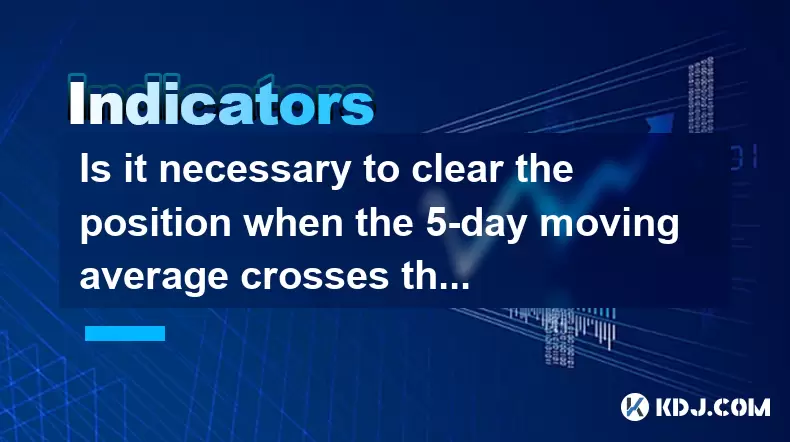
Is it necessary to clear the position when the 5-day moving average crosses the 10-day moving average?
Jun 27,2025 at 07:21pm
Understanding the 5-Day and 10-Day Moving AveragesIn the realm of technical analysis within the cryptocurrency market, moving averages play a crucial role in identifying trends and potential reversal points. The 5-day moving average (MA) and 10-day moving average are two of the most commonly used short-term indicators by traders. These tools smooth out ...
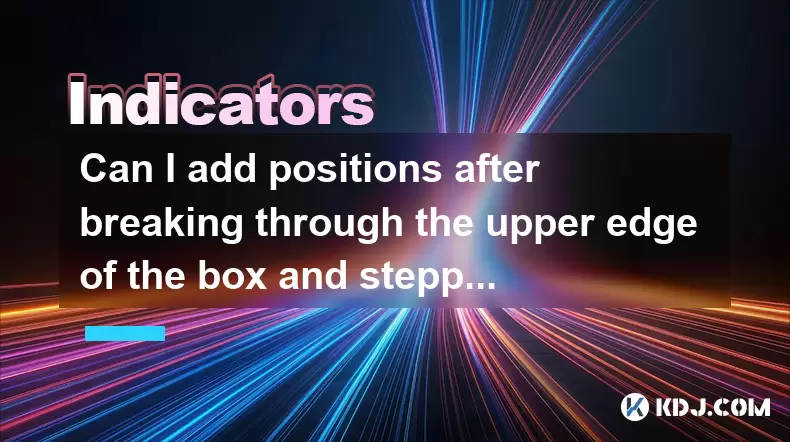
Can I add positions after breaking through the upper edge of the box and stepping back without breaking?
Jun 27,2025 at 09:56pm
Understanding the Box Breakout StrategyIn cryptocurrency trading, box breakout strategies are commonly used by technical analysts to identify potential price movements. A box, or a trading range, refers to a period where the price of an asset moves within two horizontal levels — the support (lower boundary) and resistance (upper boundary). When the pric...
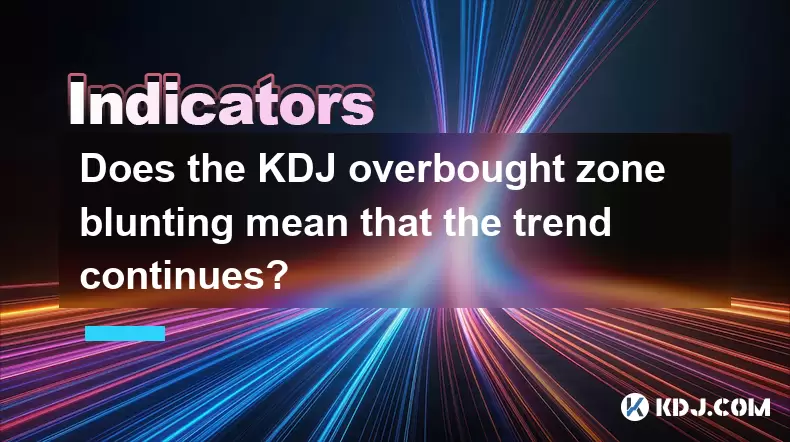
Does the KDJ overbought zone blunting mean that the trend continues?
Jun 27,2025 at 03:35pm
Understanding the KDJ Indicator in Cryptocurrency TradingThe KDJ indicator, also known as the stochastic oscillator, is a popular technical analysis tool used by traders to identify overbought or oversold conditions in asset prices. In the cryptocurrency market, where volatility is high and trends can change rapidly, understanding how to interpret the K...

Is it a trend reversal if the price breaks through the upper rail of the descending channel and then steps back without breaking?
Jun 27,2025 at 05:35pm
Understanding the Descending Channel PatternA descending channel is a technical analysis pattern formed by two parallel downward-sloping trendlines, one acting as resistance and the other as support. This pattern typically indicates a continuation of a downtrend, where price action oscillates between these two boundaries. Traders often look for breakout...
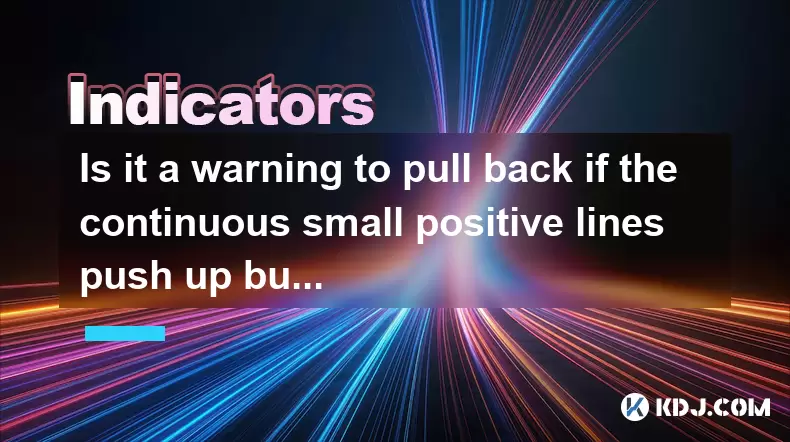
Is it a warning to pull back if the continuous small positive lines push up but the volume is insufficient?
Jun 27,2025 at 05:28pm
Understanding the Pattern: Continuous Small Positive LinesIn technical analysis, continuous small positive lines refer to a series of candlesticks where each candle closes slightly higher than its open. These candles usually have short wicks and indicate a gradual upward movement in price. Traders often interpret this pattern as a sign of steady buying ...
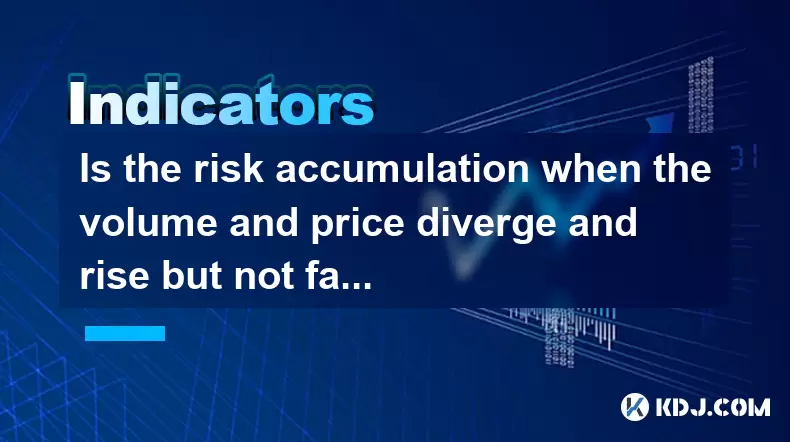
Is the risk accumulation when the volume and price diverge and rise but not fall?
Jun 27,2025 at 04:28pm
Understanding Volume and Price Divergence in Cryptocurrency TradingIn cryptocurrency trading, the relationship between volume and price plays a critical role in identifying market sentiment. When volume increases while price rises, it typically signals strong buying pressure and healthy market participation. However, when this correlation breaks—especia...

Is it necessary to clear the position when the 5-day moving average crosses the 10-day moving average?
Jun 27,2025 at 07:21pm
Understanding the 5-Day and 10-Day Moving AveragesIn the realm of technical analysis within the cryptocurrency market, moving averages play a crucial role in identifying trends and potential reversal points. The 5-day moving average (MA) and 10-day moving average are two of the most commonly used short-term indicators by traders. These tools smooth out ...

Can I add positions after breaking through the upper edge of the box and stepping back without breaking?
Jun 27,2025 at 09:56pm
Understanding the Box Breakout StrategyIn cryptocurrency trading, box breakout strategies are commonly used by technical analysts to identify potential price movements. A box, or a trading range, refers to a period where the price of an asset moves within two horizontal levels — the support (lower boundary) and resistance (upper boundary). When the pric...

Does the KDJ overbought zone blunting mean that the trend continues?
Jun 27,2025 at 03:35pm
Understanding the KDJ Indicator in Cryptocurrency TradingThe KDJ indicator, also known as the stochastic oscillator, is a popular technical analysis tool used by traders to identify overbought or oversold conditions in asset prices. In the cryptocurrency market, where volatility is high and trends can change rapidly, understanding how to interpret the K...

Is it a trend reversal if the price breaks through the upper rail of the descending channel and then steps back without breaking?
Jun 27,2025 at 05:35pm
Understanding the Descending Channel PatternA descending channel is a technical analysis pattern formed by two parallel downward-sloping trendlines, one acting as resistance and the other as support. This pattern typically indicates a continuation of a downtrend, where price action oscillates between these two boundaries. Traders often look for breakout...

Is it a warning to pull back if the continuous small positive lines push up but the volume is insufficient?
Jun 27,2025 at 05:28pm
Understanding the Pattern: Continuous Small Positive LinesIn technical analysis, continuous small positive lines refer to a series of candlesticks where each candle closes slightly higher than its open. These candles usually have short wicks and indicate a gradual upward movement in price. Traders often interpret this pattern as a sign of steady buying ...

Is the risk accumulation when the volume and price diverge and rise but not fall?
Jun 27,2025 at 04:28pm
Understanding Volume and Price Divergence in Cryptocurrency TradingIn cryptocurrency trading, the relationship between volume and price plays a critical role in identifying market sentiment. When volume increases while price rises, it typically signals strong buying pressure and healthy market participation. However, when this correlation breaks—especia...
See all articles























































































